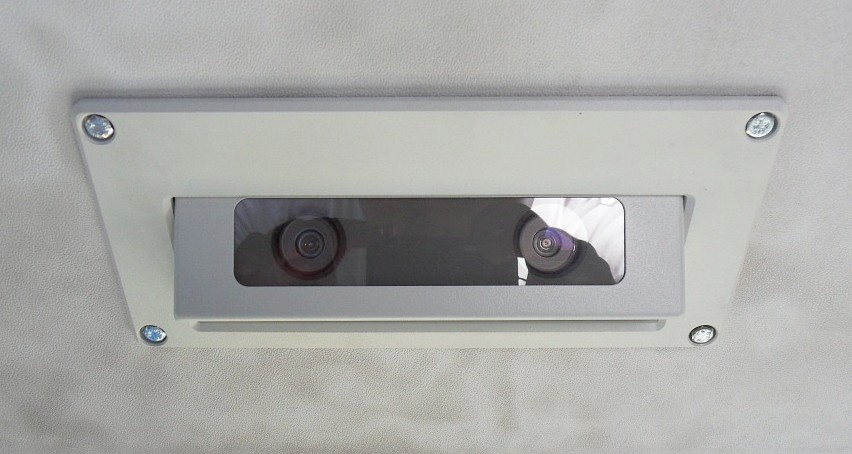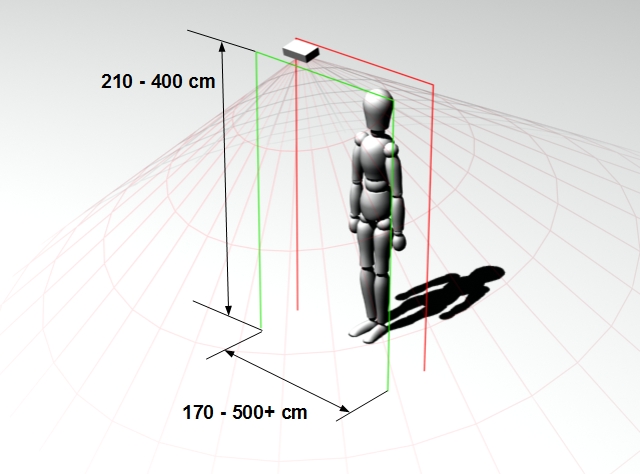Automatic Passenger Counting System
Passenger counting is one of the basic methods of evaluating efficiency of timetables, routes and utilization of rolling stock in public transportation. Collecting information about number of passengers travelling on specific lines in relation to time of day, makes it possible to effectively schedule the utilization of available vehicles. Modifications made to timetables basing on collected data from the system, helps minimizing maintenance costs for the carrier, while maintaining consistently high level of service that will provide satisfaction to the passengers. To make it possible, it is necessary to collect highly reliable and detailed data on the number of travelling passengers.
Infotron's Automatic Passenger Counting System (APC) offers accuracy exceeding 98%, and provides all the essential data needed for ridership analysis, planing of new routes and making necessary modifications to timetables. Providing current timetables to the system makes it also possible to analyse each vehicle in terms of punctuality in relation to the time of day.
//

Counting modules
Passenger counting modules are desgined to be installed in virtually any type of vehicle, regardless if it's a new vehicle with low-level floor, or older type one with stairs at the entrance. Each counter is installed inside vehicle above entrance - for each pair of doors, regardless of its width, only one counter is needed, while most infrared based systems need two or more sensors for doors wider than 100cm.

Passenger counting modules use advanced stereoscopic image analysis - currently the most advanced technology for people counting, exceeding in almost every respect active and passive infrared based systems. Analyzing differences in images observed by each of the two cameras, a disparity map is created - this enables the counting module to distinguish moving objects from the background with very high accuracy.
Because the counting module sees the depth of the scene, it is possible to set the minimum height of detection, making it possible to ignore objects lower than a predetermined threshold, e.g. small children, a trolley, or a large suitcase.
Cameras built in the counting modules can be used to verify the accuracy of the system by recording images during passenger exchange at the stops. This way, without stress and possible errors during manual counting in the vehicle (especially in crowded situations) it is possible to compare data generated by system with actual number of passengers entering and exiting vehicle.
Below you can watch system's behaviour in various real-life situations in the vehicle:
Complementary system equipment
Besides counting modules, the system consists of on-board computer with 3G modem, GPS receiver, and WLAN card for wireless data transmission on the depot. The on-board computer communicates with each counter via LAN. Using network switch enables virtually unlimited number of counters to be connected to single computer. The 3G modem makes it possible to send live data from vehicle to dispatcher at headquarters, such as current vehicle load, information about delays in relation to timetable etc.
The system is supplied with database management software, so it is possible to create reports and charts either manually or automatically according to configurable criteria such as time interval, route, line, group of stops etc.
Basic system functionality:
-
counting passengers;
-
automatic wireless data transmission;
-
GSM data transmission (e.g. vehicle load);
-
database management;
-
assigning stop name to GPS position;
-
automatic and manual reports and statistics;
-
data export to PDF and spreadsheet files;
-
additional statistical data calculation, like person-kilometre, time of passenger exchange at stop or timetable deviation,
can be expanded according to specific customer's needs, like connecting additional sensors to on-board computer to record additional parameters (e.g. using wheelchair ramp or using windshield wipers indicating rainy weather to assess its impact on the number of passengers travelling etc.).
If client already has his own software for statistical purposes it is possible to integrate our system with it.


